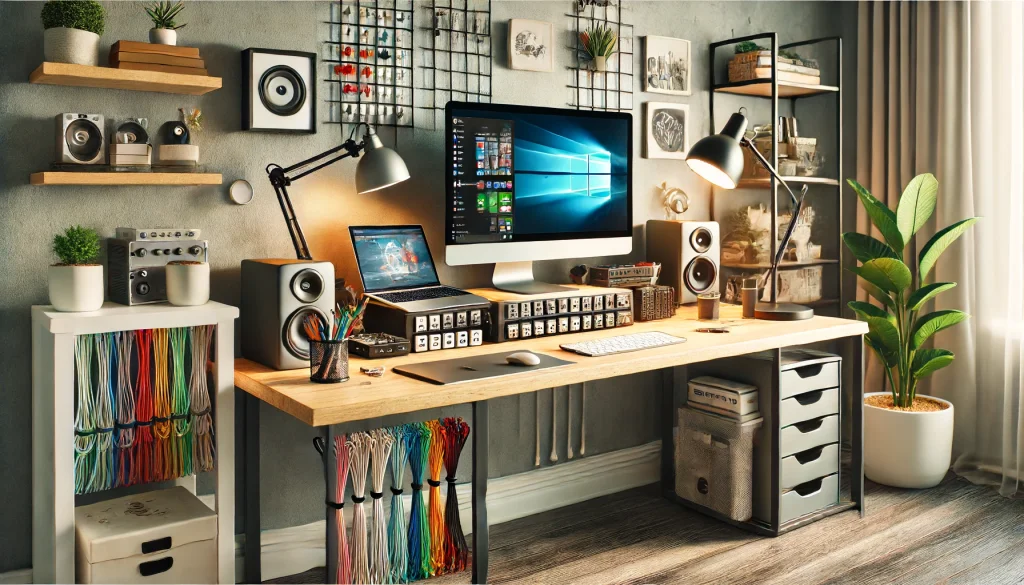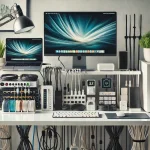Proper airflow in electronics is crucial for maintaining optimal performance and longevity. One effective way to ensure this is through meticulous cable tie management. By organizing and securing cables correctly, you can prevent overheating and improve the efficiency of your electronic devices.
Using cable ties to manage cables not only enhances airflow but also contributes to a tidy and professional setup. In this article, we'll explore how to use cable ties to maintain proper airflow in electronics, helping you maximize the performance and lifespan of your equipment.
Why Proper Airflow Is Essential
Proper airflow in electronics prevents overheating. When devices overheat, they can malfunction or sustain permanent damage. Effective cable management helps keep air flowing freely, which is essential for cooling.
Overheating can lead to performance issues and shorten the lifespan of electronic components. By managing cables with cable ties, you ensure that air can circulate around and through the devices, reducing the risk of overheating and maintaining optimal performance.
The Role of Cable Ties in Cable Management
Cable ties are versatile tools for organizing and securing cables. They come in various sizes and materials, making them suitable for different applications. Proper cable tie management enhances airflow by reducing clutter and ensuring cables do not obstruct ventilation paths.
Using cable ties to bundle cables together can create a neat and organized setup. This reduces the risk of cables tangling and blocking airflow, ensuring that cooling fans and vents remain unobstructed. This organization is crucial for maintaining proper airflow and preventing overheating.
Choosing the Right Cable Ties
Selecting the appropriate cable ties for your setup is essential. Consider factors such as size, material, and tensile strength. For electronic applications, nylon cable ties are a popular choice due to their strength and durability.
Ensure the cable ties you choose can withstand the environment they will be used in. For example, if your setup is in a high-heat area, opt for heat-resistant cable ties. Using the right cable ties ensures they will perform effectively without degrading over time.
How to Organize Cables for Optimal Airflow

Organizing cables effectively is key to maintaining proper airflow. Start by identifying the cables you need to manage. Group them by function or destination to simplify the process. Once grouped, use cable ties to bundle them together neatly.
When bundling cables, avoid making the bundles too tight. Tight bundles can restrict airflow and cause heat buildup. Instead, secure the cables just enough to keep them together without compressing them. This approach allows air to circulate freely, aiding in cooling.
Positioning Cable Bundles
The positioning of cable bundles plays a significant role in maintaining airflow. Keep bundles away from cooling fans and vents to avoid obstructing airflow. Position cables along the edges of the case or enclosure, leaving the central area clear for air circulation.
Using cable management accessories like clips and mounts can help keep cable bundles in place. Secure the bundles along the edges and corners to ensure they do not interfere with the airflow within the electronic enclosure. Proper positioning prevents hotspots and enhances cooling efficiency.
Avoiding Common Cable Management Mistakes
Effective cable management requires avoiding common mistakes that can hinder airflow. One common mistake is over-tightening cable ties. Over-tightened ties can compress cables, reducing their ability to dissipate heat and obstructing airflow.
Another mistake is neglecting to plan the cable layout. Without a plan, cables can become tangled and obstruct airflow. Plan your cable layout before securing them with cable ties. This approach ensures a clean and organized setup that promotes proper airflow and cooling.
Maintaining and Inspecting Cable Ties
Regular maintenance and inspection of cable ties are crucial for ensuring ongoing airflow. Over time, cable ties can wear out or become loose. Regularly check the condition of your cable ties and replace any that show signs of wear or damage.
Inspect the cable bundles to ensure they remain secure and do not obstruct airflow. Adjust the ties if necessary to maintain optimal positioning. Regular maintenance helps ensure that your cable management continues to promote proper airflow and cooling.
Benefits of Proper Cable Tie Management
Proper cable tie management offers several benefits. It enhances airflow, reduces the risk of overheating, and improves the overall organization of your electronic setup. Additionally, a well-organized setup makes troubleshooting and maintenance easier.
Enhanced airflow and cooling help maintain the performance and longevity of electronic components. Proper cable management also reduces the risk of accidental damage to cables, ensuring a reliable and efficient setup. The benefits of using cable ties for cable management are clear and significant.
Tips for Effective Cable Management
To effectively manage cables, follow these tips:
- Plan Your Layout: Before securing cables, plan their layout to ensure an organized setup.
- Use Appropriate Ties: Choose cable ties that are suitable for your specific needs and environment.
- Avoid Over-Tightening: Secure cables just enough to hold them together without compressing them.
- Position Cables Correctly: Keep cable bundles away from cooling fans and vents to maintain airflow.
- Regular Maintenance: Inspect and adjust cable ties regularly to ensure ongoing effectiveness.
These tips help create an organized and efficient setup that promotes proper airflow and cooling.
Conclusion
Ensuring proper airflow in electronics through cable tie management is essential for maintaining optimal performance and longevity. By organizing and securing cables correctly, you can prevent overheating and enhance the efficiency of your electronic devices.
For more insights and tips on cable ties and other related products, be sure to explore cabletiesunlimited.com and follow us on our social media communities on Facebook and Instagram!
Want to speak with one of our professionals? Reach out at 866-891-0137 and we'll be delighted to help!

